
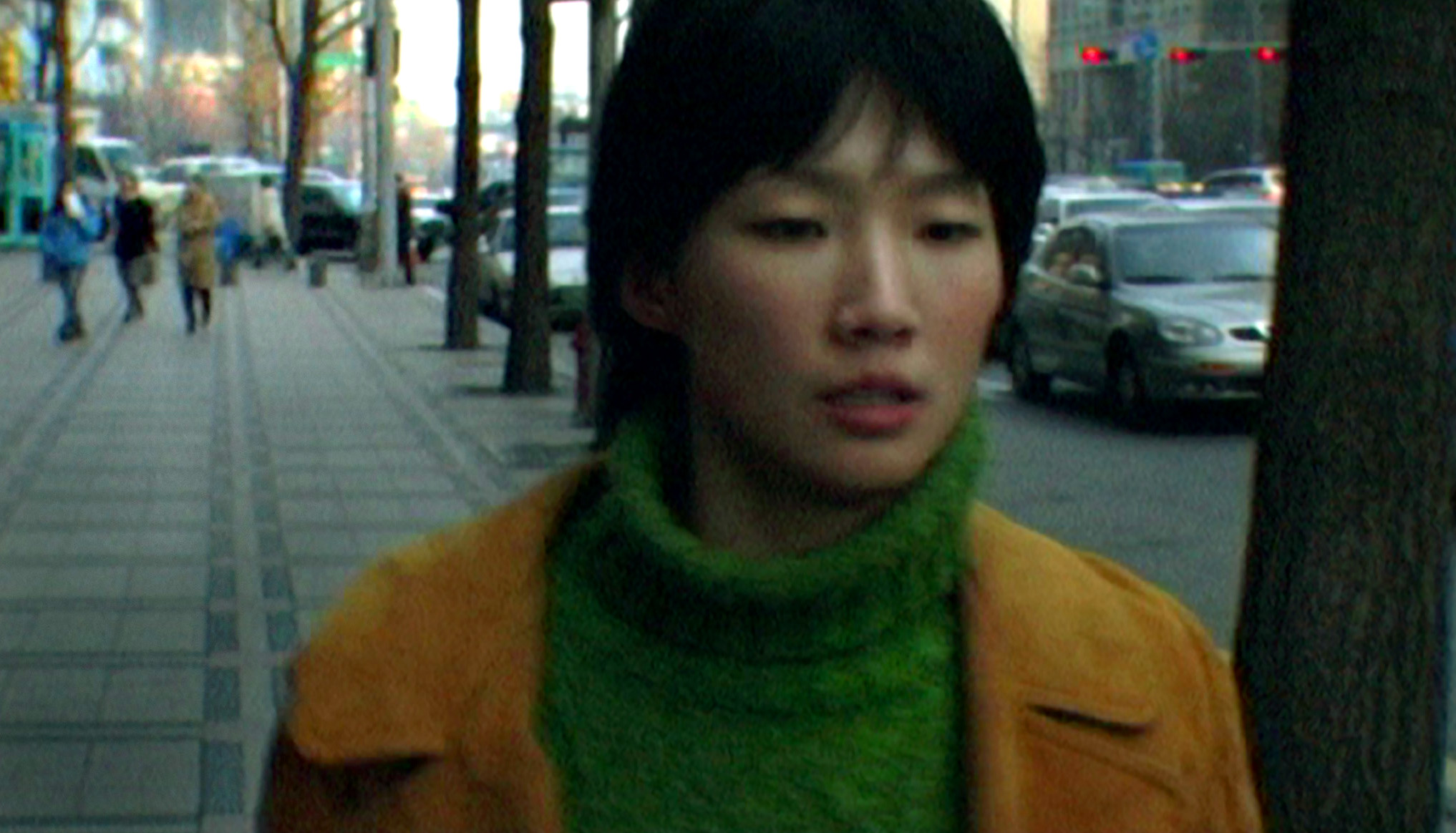


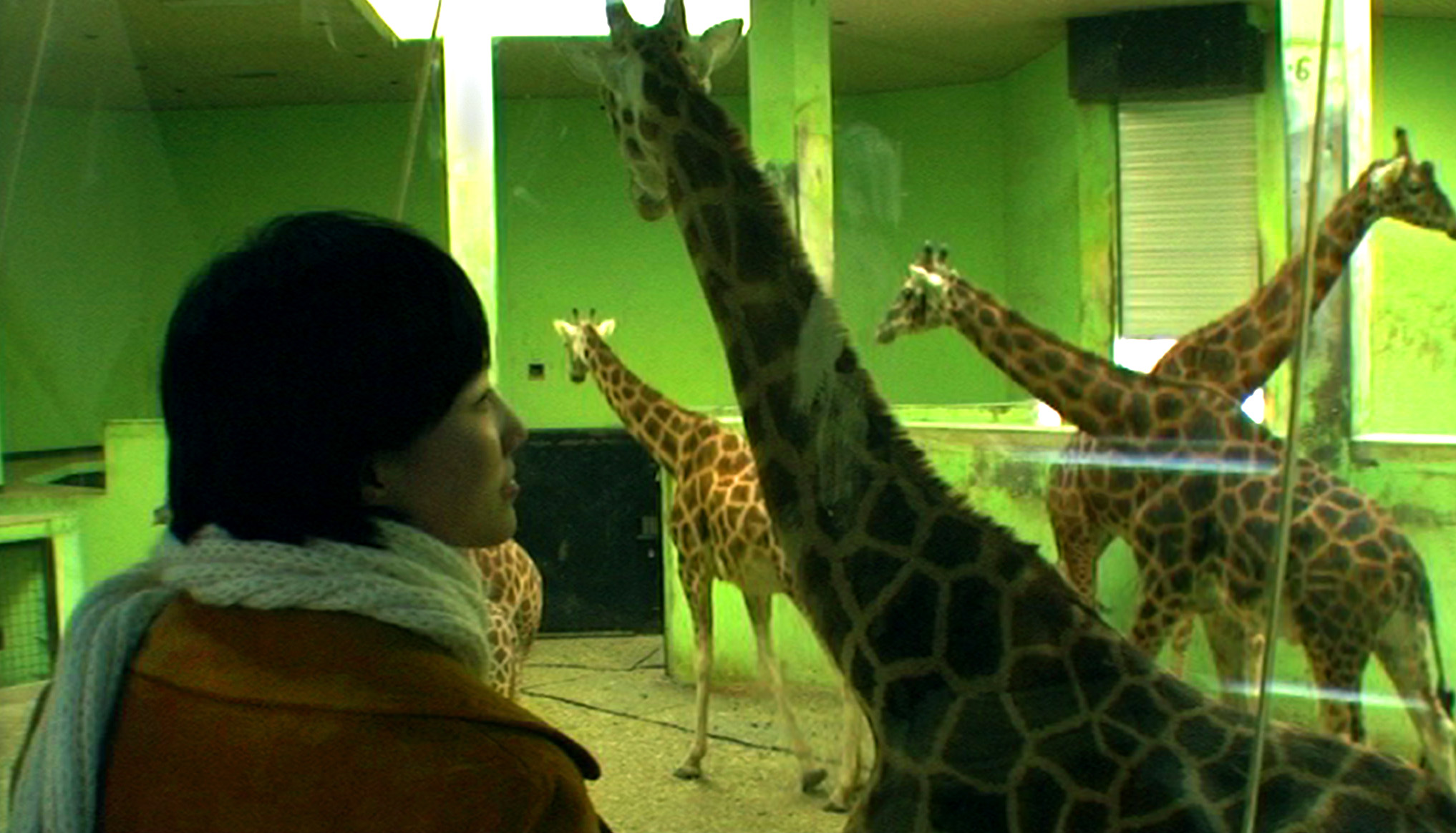
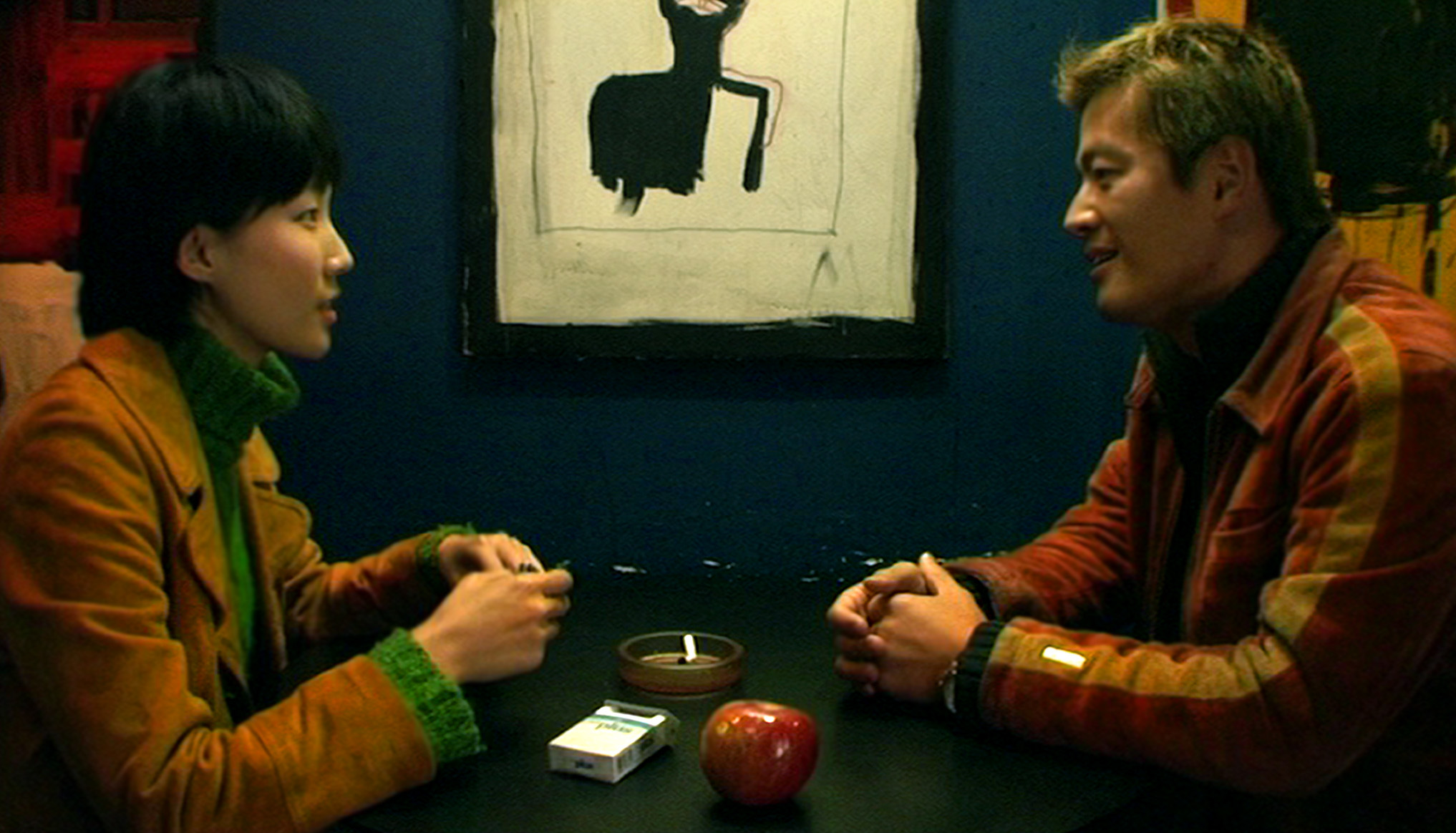

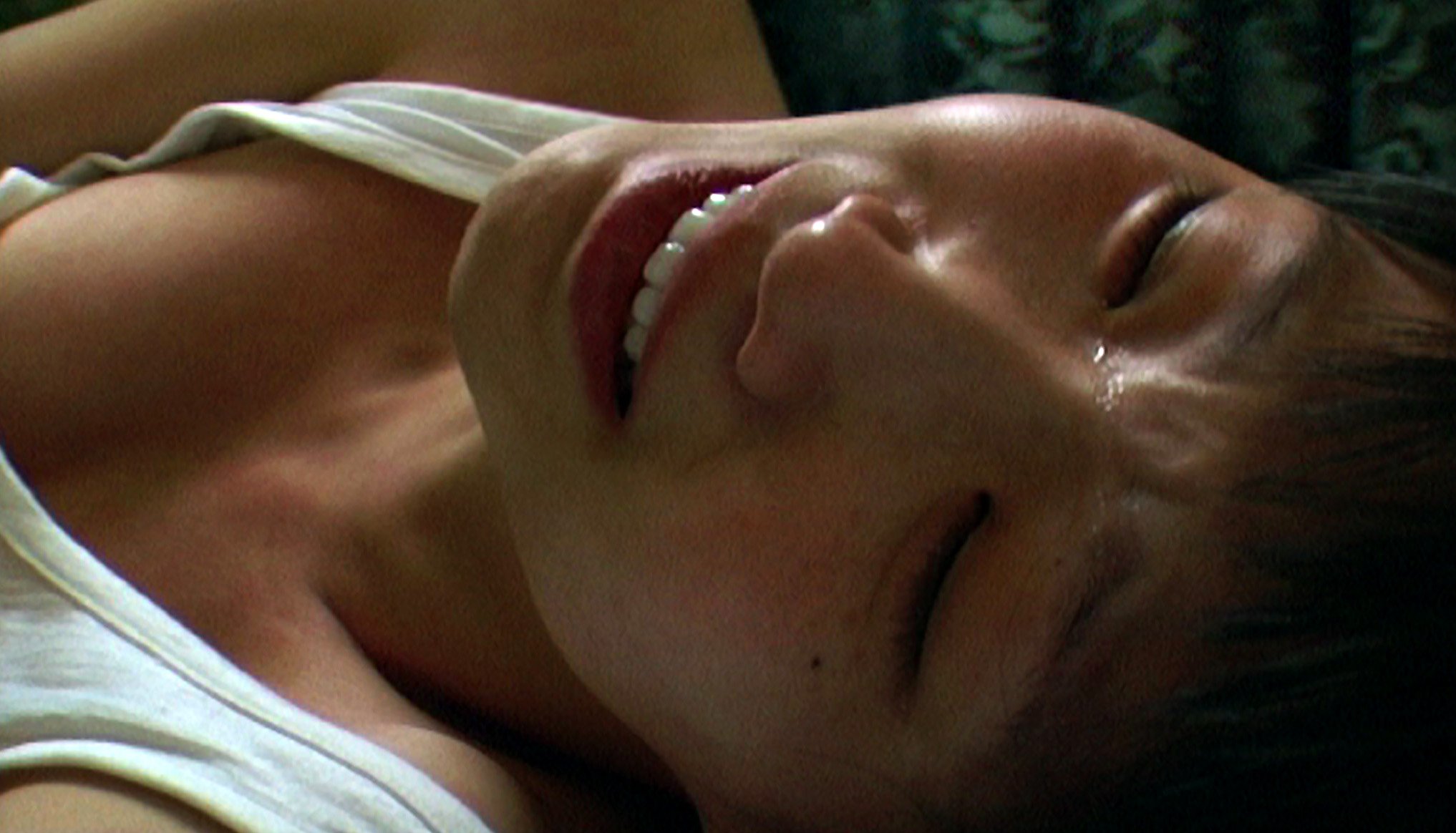
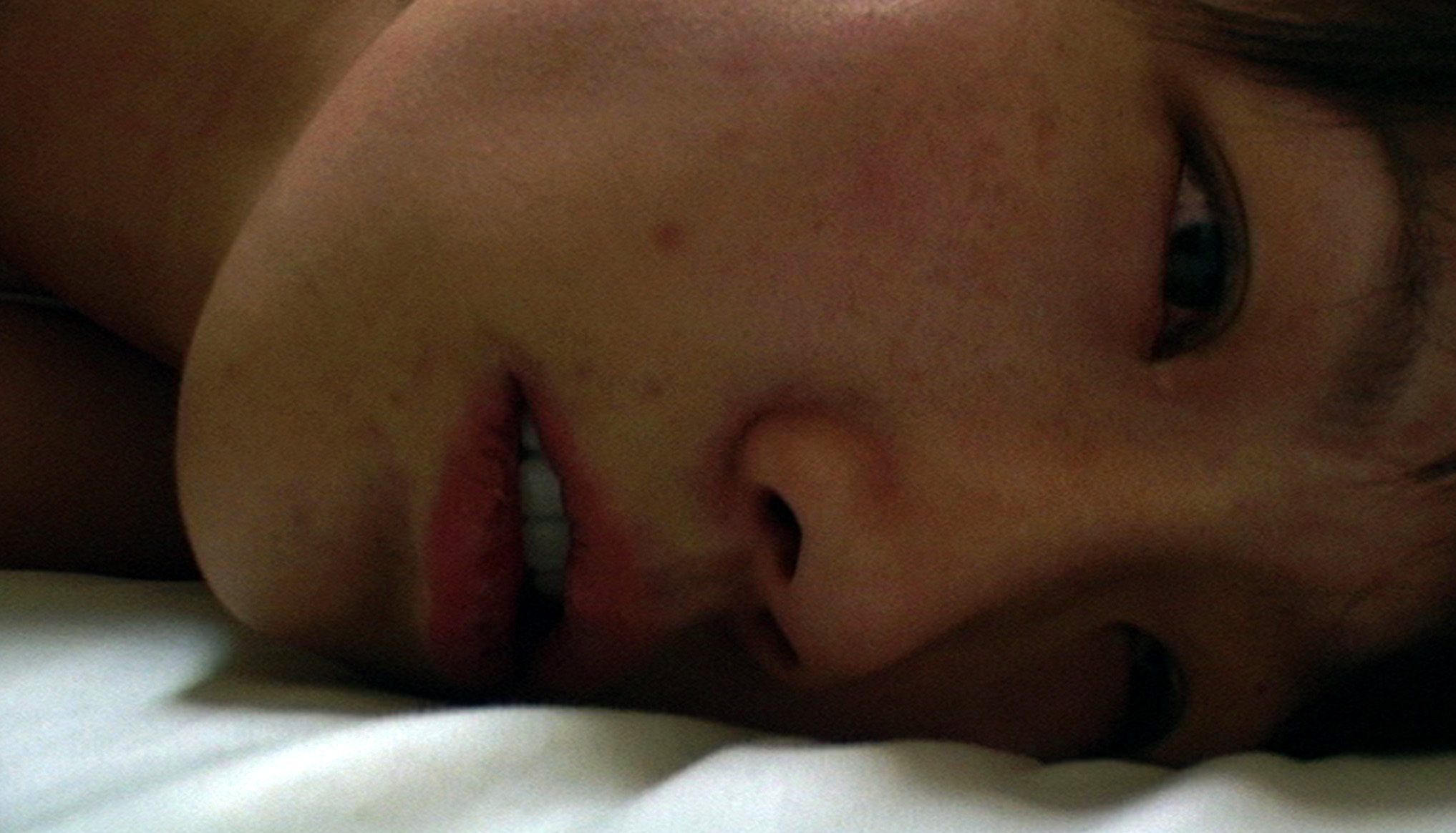
"The only true radical discovery in a landscape (of recent Korean cinema) comes from a young 30-year-old filmmaker, Gina Kim." —Olivier Joyard, Cahiers du Cinema
"Kim's rigorous mise-en-scene matches the unflinching singaularity of her vision." —Berenice Reynayd, Senses of Cinema
"Kim has a terrific eye, a gift for near-wordless storytelling, a knack for generating a tense gliding rhythm between images and sounds, shots and scenes, and for yielding a quality of radiance in her actors." —Michael Almereyda, Film Comment
"The pictures Kim does present are frequently stunning... especially considering the film was shot for next to no money." —Johnny Ray Hutson, San Francisco Bay Guardian
"Achingly beautiful..." —Innbo Shim, Sna Francisco Asian American Film Festival
SYNOPSIS
Gina Kim's first fiction feature divides into two parts, each centered on a young woman suffering loneliness and displacement. The first is set in California; Gah-in is a Korean student who is having an affair with a Korean emigre named Jun, knowng him to be married. After one routine night together, Gah-in is suddently gripped by an awareness of the emptiness of the affair. She retreats into herself, unplugging the phone, lapsing into eating disorders, facing a very uncertain future. The second part is set in Korea; Do-hee is Jun's estranged Korean-American wife, and she's visiting Seoul for the first time in many years. Trouble is, she's pregnant (by someone other than Jun) and can't make up her mind whether to take abortion pills or not. She coaxes a friendly barman to pose as her husband for a visit to her senile grandma-and finds herself with someone to open up to. The deadline for her decision abut the abortion pill is approaching...
Exceptionally good-looking, Invisible Light brings together elsements from Kim's video work (eating disorders, the struggles for an independent identity) and from an arthouse tradition of movies about characters at psychological extremes. It adds new timbers and muscles to Korea's emerging women's cinema. —Tony Raynes, Vancouver Film Festival Catalog
CAST AND CREDIT
A Picture Book Movies production in cooperation with Korean Film Commission and Coreana Do-hee Sun-jin Lee Gah-in Yoon sun Choi Producer Gina Kim, Kyung Hyun Kim Writer/Director Gina Kim Cinematography Peter Gray, Benito Strangio Sound Jon Oh, Woo-jin Jo, Editor K. Han, Gina Kim
78min, Color, 35mm, 2003.
REVIEWS
Film Comment
On the other end of the spectrum, there's Gina Kim's achingly spare, focused, naturalistic (and undistributed) feature debut, Invisible Light, which divides itself between two stories linking two solitary young women, one in L.A., the other in Seoul. The film's title is rather precious, and contradictory, as what's remarkable about the movie is extremely visible. Kim has a terrific eye, a gift for near-wordless storytelling, a knack for generating a tense gliding rhythm between images and sounds, shots and scenes, and for yielding a quality of radiance in her actors.
—Michael Almereyda (Jan/Feb 2004)
Cahiers Du Cinema
Already among the selections at Locarno and Vancouver, Invisible Light is a little block of feminine hardness and repressed anger. Two stories of solitude follow one another: that of a Korean student exiled in the USA and a victim of anorexia; the other of a young woman who has returned to Korea after a long absence and who no longer knows anyone. At first constructed like a series of rigid playlets bordering on video installation and recalling the static work of (Chantal) Akerman in the 1970s, Invisible Light comes to life in a second part that is somewhat less controlled. In any case, by means of either fixed shots or a trembling camera, Gina Kim seeks to get to the heart of a single secret: what happens when you dig deep into the peripeties of the everyday-the moment when the inevitable repetition of the same leads to madness.
—Olivier Joyard, translated from French (November 2003)
LA Weekly
This debut narrative feature by Gina Kim employs a structuralism reminiscent of Chantal Akerman's films, with beautifully balanced compositions-held for sometimes excruciating lengths-that form an absorbing diptych about two troubled Korean women.
One is a binge-eating, weight-fixated L.A. college student; the other is a newly pregnant, middle-aged woman who's just returned to Korea after a long absence. Although their stories unfold on different continents, each character finds herself, in different ways, imprisoned by domestic spaces and embroiled in a love-hate relationship with her own body. Other, fragmentary narrative connections gradually emerge, but Kim's primary focus remains her exploration of a woman's-any woman's-struggle to define herself in an image-obsessed, male-centric culture.
—Scott Foundas (June 18-24, 2004)
Los Angeles Times
Two Korean women, linked by adultery and a message left on an answering machine, solitarily struggle with personal issues in Gina Kim's contemplative diptych Invisible Light. Gah-in (Choi Yoon Sun) is a college student marooned in Los Angeles over winter break, tormenting herself about her affair with a married man.
The second part of the film follows Do-hee (Lee Sun-jin), the wife of Gah-in's lover, as she returns to Seoul after a long absence, pregnant by another man.
Kim carefully uses composition and light to evocatively create mood while dealing with feminist themes, particularly that of women's relationship to their bodies. Intimate to the point of voyeurism, Invisible Light is also a deeply introspective and accomplished art film.
—Kevin Crust (June 21, 2004)
Senses of Cinema
Gina Kim attracted international attention with the various installments of her video diaries in which she obsessively documents her relationship to enclosed domestic spaces and her eating disorders. Kim's narrative feature debut goes one step further in exploring her narcissistic/solipsistic relationship to the female body.
There are hardly any strangers in the house that Gina built - her female protagonists, acutely aware of their physical desires and bodily functions are totally aloof. However, the sense of despair and loneliness is gradually replaced by an inner peace and strength.
The film comprises two parts that complement each other, and are secretly connected: the absentee lover of the first woman, Gah-in, who lives in California, is the husband of the second woman, Do-Hee, who leaves and returns to the Korea of her childhood, where she knows virtually no-one. Prone to eating disorders, Gah-in can't leave her apartment in the countryside, while Do-Hee, without a place to go, wanders from motel to motel, once with a strange man (sex takes place off-screen), mostly alone, unsure if she should take an abortion pill and striking an awkward friendship with an a-sexual bar-tender.
Kim's rigorous mise en scene matches the unflinching singularity of her vision and offers a compelling, albeit disturbing vista on what Lacanian psychoanalyst Michele Montrelay describes as "the woman's relationship to her body, a relationship simultaneously narcissistic and erotic. For the woman enjoys her body as she would the body of another"
—Berenice Reynaud (www.sensesofcinema.com)
San Francisco Bay Guardian
Gina Kim's Invisible Light adds reach to this wave - it spans an ocean, to California. Split national identity is built into the structure of Kim's debut feature. The first half focuses on Gah-In, a Korean student in California: a message on Gah-In's answering machine, left by the wife of a man she's having an affair with, seems to trigger a bout of agoraphobic and anorexic despair (she never voices a word). The second half follows Do-Hee, the woman who left the message on Gah-In's machine: during a journey back to Seoul, Do-Hee searches for an answer to her own dilemma (it isn't whether or not she should leave her husband).
The man who links these two women remains unheard and unseen - out of the picture - from start to finish. The pictures Kim does present, especially during the film's Californian section, are frequently stunning. (Especially considering the film was shot for next to no money on a Sony DSR 500 Camcorder.) She magnifies the leafy-green view from a doorlike window in Gah-In's lifeless gray-white apartment, and later first gazes down on and then stares up at the choppy surface of a pool: bracingly edited, these points of view hint at Gah-In's inner conflicts and boundary issues. Ditto an uncanny sequence during the film's second half, when giraffes behind glass at a zoo seem to perform a dance for Do-Hee.
Infidelity is beside Kim's point; cheating is an ironic connecting thread, considering both women are so isolated. With one exception: the intense bond between Kim's direction and her main characters verges on symbiosis. Gah-In's chewing noises violently dominate the first half's soundtrack, just as rustling sheets practically chafe the audience's ears in Park Ki-Yong's similarly minimalist date in purgatory Camel(s). The longest take observes a binge from beginning to end; appliances and walls form monoliths around Gah-In as she near mechanically devours the contents of her churning fridge: strawberries, bread, "lo-fat" milk, carrots, and mayonnaise.
Though Do-Hee's circumstance - in particular, the quandary spawned by her response to adultery - strangely mirrors that of the wife in Im's film, Invisible Light's stasis stare-downs are less populist. (Framed prints on the walls of Gah-In's apartment offer clues to Kim's painterly approach.) The first segment evokes the domestic prison terms of Chantal Akerman's Jeanne Dielman, 23 Quai du Commerce, 1080 Bruxelles and Todd Haynes's Dielman-inspired Safe. The Korean section builds to a sustained close-up of Do-Hee - the section's equivalent of Gah-In's binge - that invokes the salty-wet finale of Tsai Ming-liang's Vive l'amour. A child, a ring, these are a few of the favorite things that cause tears in Invisible Light and in Kim's film. Both are true to the unfaithful.
—Johnny Ray Huston (March 3, 2004)
Chicago Reader
Gina Kim's first feature Invisible Light (2003) is a sensitive study of a love triangle among Koreans in California. Gah-in is having an affair with Do-hee's husband, but the futility of the liaison pushes her into isolation, depression, and anorexia. Estranged from her unfaithful mate and pregnant with another man's child, Do-hee returns from South Korea to visit her elderly grandmother. Combining a minimum of dialogue with a subtly articulated range of sounds—the chewing of food, the rustling of bedsheets, the whir of a refrigerator—Kim quietly evokes intense, solitary suffering. The lead actresses, Yoon-sun Choi and Sun-jin Lee, are both first-rate. In English and subtitled Korean. 78 min.
—Joshua Katzman
San Francisco International Asian American Film Festival
Gina Kim is mastering the art of baring one's soul in front of the camera. In her documentary Gina Kim's Video Diary, she demonstrated the ability to capture the subtle depths of emotion. These talents are echoed in Kim's debut narrative feature Invisible Light, where lingering, meticulously framed shots expose the turbulent and varying emotions of inner struggle and psychological extremes. Choi Yoon Sun (as Gah-in) and Lee Sun Jin (Do-hee) give daring performances as two US-based Korean women faced with despair, and struggling to reclaim their mental strength.
Gah-in is having an affair with Do-hee's husband. Distressed by her illicit affair, she retreats into her house, disconnects the phone and loses herself in a self-hating routine of starving and binging. At the same time, Do-hee learns that she is pregnant with another man's child, leaves her husband and returns to Korea for the first time in thirteen years.
Alone throughout much of the film, both women are stripped naked-both physically and psychically-as each are viewed in intensely private moments. Armed with a patient camera, Kim provides an unflinching gaze into two women's darkest hours, and memorably discovers the precarious balance between resilience and fragility. Achingly beautiful, Invisible Light offers an important new voice to Asian American cinema. —Innbo Shim, (from 2004 catalog)
Gerald Peary
It’s been four decades since Italian filmmaker Michelangelo Antonioni sent Monica Vitti walking aimlessly, unhappily, through the icy environment which constitutes the modern city. In such Antonioni classics as L’Avventura (1960), L’Eclisse (1962), and Red Desert (1964), Viti showed how even upper-middle-class women could become paralyzed by empty relationships and, more subtly, by a sleek, alien architecture which offers no comfort for the weary-of-life. Hence, have things straightened out? Not in the arthouse film world. Though telling a familiarly grim cinema story, Gina Kim’s Invisible Light offers a particularly vivid dramatization of this affliction of ennui and estrangement which is said to poison today’s woman. In the case of this first feature, two women, each of whom suffers for half the 78-minute film before Kim’s obsessively probing, unflinching 35mm camera. Part 1, set mostly in a rental apartment in a motel-like building in California, sticks close to twenty-ish Goh-in (Yoon Sun Cho), as she nibbles on low-low-fat food, keeps checking her weight on a scale (shedding her running pants so she’ll register less), and avoids answering the telephone, which she’s unplugged. Though there’s almost no dialogue (except for a "Yes" and a "Thank you"), a telephone message is played by Goh-in, and it’s a disturbing one. A desperate woman pleads with her for dialogue, saying "I’ve known about you for a long time, but I don’t hate you personally. Please pick up the phone."
This is what we surmise: the woman on the phone is someone’s wife, and Goh-in is that woman’s husband’s mistress. I say "surmise," because Goh-in says nothing in reply to the call. Her frenetic actions say plenty: she keeps prowling her apartment munching on victuals. Gina Kim holds the camera for one excruciating long take in which Goh-in sits before an open refrigerator and gobbles random things from every shelf. Cut to Goh-in gagging and heaving over a toilet.
Goh-in’s apartment has the half-lived-in, impersonal look of something grabbed up as convenient to school by a well-healed foreign student in America. Is that Goh-in’s status? We know nothing except that she’s a Korean residing in California, and that she pines for the snows of her native country.
Cut to Part 2, and the "I’ve known about you for a long time" phone call is repeated from the other end. The wife, Do Hee (Sun Jin Lee), is calling California from Seoul, South Korea. Calling her husband’s mistress. More ennui, more unhappiness. Do Hee, we slowly find out, has flown from the USA back to Korea, skipping out on her husband. He’s unfaithful, she’s pregnant. Should she have the baby? Should she abort it? Sharing a man, she’s the mirror image of Goh-in, residing here in a loser motel, troubled by eating, vomiting in the street. And there’s an equivalent scene to Goh-in’s bulimic refrigerator eat-in: a long long take in which Do Hee masturbates in her bed and, after a dissatisfying orgasm, cries her eyes out.
Is there hope? At one point, Do Hee eats an apple with some relish and, in the last cryptic scene, she shines a flashlight at her pregnant belly and sings what might be a Korean lullaby. For the baby? Gina Kim, who is teaching this year at Harvard, will be at the Harvard Film Archive screening. Please ask her.
—Gerald Peary (October, 2004)
Pardo News
Russian Poetry, algebra and personal experience are just some of the sources of inspiration behind Korean director Gina Kim’s feature diptych Geu Jip Ap (Invisible Light) about how two women connected by one man.
Early on in Geu Jip Ap, one of the characters reads out the following line from Russian poetess Marina Tsvetayeva, “I didn’t want this, not this (but listen, quietly, to want is what bodies do and now we are ghosts only.)”
“That really sums up the whole theme,” says Kim. “It’s all about desire where there’s desire there’s also repression. When people stop desiring they stop being social beings.”
Consisting of two parts, the film revolves around Gah-in and Doo-hee--two women struggling to come to terms with themselves and the cards fate has dealt them.
Gah-in is a 26-year-old Korean student living in the United States. She is dealing with the emotional fall-out from an affair with a married man. In a bit to master her emotions she cuts off the phone and assiduously monitors her food intake.
On the other side of the globe, the married man’s wife Doo-hee is dealing with a crisis of her own. She too was having an affair and has fallen pregnant by the other man. She has returned home to Korea after eight years’ absence to figure whether to keep the child.
“I love maths,” says Kim. “The script is based on functions which revolve around the same axis but never intersect… In the story the characters never meet but revolve around one man. They are from the same origin but the way they intersect with people is different.” says Kim.
Geu Jip Ap is Kim’s first feature length film after a series of mainly autobiographical works exploring her own relationship with her body and her desires.
Her penultimate work Gina Kim’s Video Diary charts her coming to terms with her mother’s bulimia and own anorexia, moving symbolically into adulthood as she accepts both her mother’s miserable fate and her own conditions.
“Although it was a documentary in some ways I was still acting a Gina character,” says Kim. “I had to objectify myself in order to make the documentary. There is a consistent theme that I had to draw from the video diaries.”
It seems the director is now attempting to close the door on that chapter in her life. She is currently developing a provisionally entitled feature called Bliss about an American soldier stationed in Korea who falls for a neglected 13-year-old girl.
“This is a departure in many ways. Not least because it focuses on a central male character,” says Kim. “All of my work is a portrait of people desperate for intimacy but unable to get it."
—MG (August 2003)
